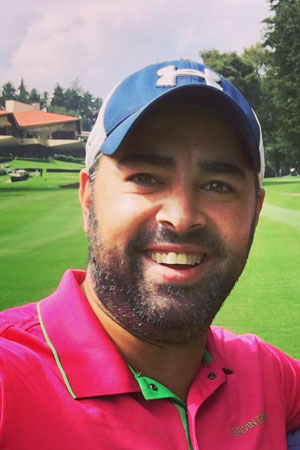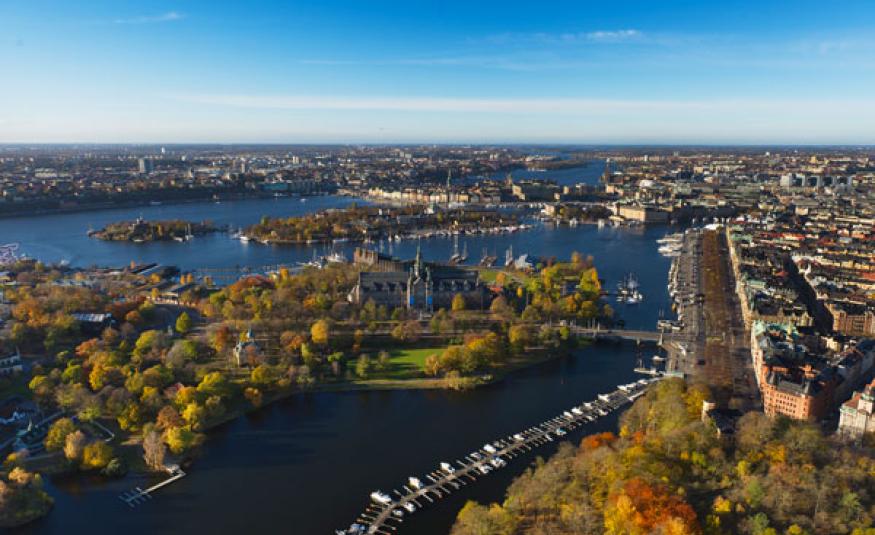EW’s international man of exhibition mystery, Johnno G shares his recent Stockholm syndrome with anyone contemplating life outside the exhibition hall.
Arriving in Stockholm, I was struck by the beauty of the natural landscape; much flatter than I expected and with natural forest covering much that was visible to the eye.
Signs of a healthy nature were reinforced by views of football pitches, water sports facilities, golf courses and lakes dotted between the forest lines.
The initial airport experience was clean and healthy, too. Arlanda Airport is well able to cater for a large number of visiting delegates or exhibitors.
If I were to manufacture one gripe, however, then maybe the escalators were a little too laid back for the tastes of this impatient Londoner always in a hurry, but, hell, go with the (slower) flow on this occasion…
The Arlanda Express into the city did move me through the gears (up to 190kph) and, cutting through the forest in the evening sunlight, it is a quick and efficient way to arrive in the centre.
This incredible machine ticks all the green boxes, running on 100% renewable green energy and it took just 20 minutes to reach Stockholm Central.
 The 45km journey is not all green uplands, it must be said. Some industrial sites come into view and even some closed down businesses, visible signs that Sweden is not immune to economic downturns.
The 45km journey is not all green uplands, it must be said. Some industrial sites come into view and even some closed down businesses, visible signs that Sweden is not immune to economic downturns.
That said, the outlook of the locals is certainly modern and optimistic and I also had a spring in my step when I explored the city a little on my first evening, down to the lake to take in the view across at Stockholm Palace, a stunning building that forms the focal point of the city.
The city is full of small streets where pedestrians and cyclists rule the roost and the tram system effortlessly weaves its way through the heart of the city.
It struck me that the bulk of the Volvos must be exported as car traffic seemed to be light, at least in comparison to London.
Stockholm is made up of 14 of islands, all connected by 50 bridges. The city also claims to embrace a wider region, referring to itself as ‘The capital of Scandinavia’.
Stockholm also has weight behind its marketing boast to be “the most creative city in the world” and claims to be second only to Silicon Valley as a global tech hub. The roots of apps and tech such as Spotify, Candy Crush, Telia, Minecraft and iZettle can be found here.
Tourism and business tourism are a huge part of what the city is trying to do; and here the authorities rely heavily on a very skilled local workforce who make it all happen.
A recent initiative called ‘The Lovers, Haters and Hesitators’ challenges people on their (perceived) views of the city.
Welcoming good, bad and indifferent feedback, haters and hesitators were welcomed to the city with a view to changing their perceptions.
Social media coverage has been broad and, to date, only one American has refused the invitation to have the preconceptions challenged.
The launch video was watched on YouTube over 6,000,000 times with tracked figures showing that over 95% of those watched the video in its entirety.
The latest initiative adding fuel to Sweden’s reputation as a fair and inclusive society is the launch of ‘Stockholm - A woman’s place’, a truly inspiring initiative that aims to ensure equal rights for women and men across all spectrums and which includes 480 days of parental paternity leave to be shared equally between both parents.
If Stockholm’s social conscience is clearly in the right place, then the visitor numbers seem to be adding solid stats to the picture: July 2018 saw Stockholm’s highest ever visitor rate in a calendar month, justifying a planned local investment by the city authorities between now and 2030 of €95bn.
A local author wrote on social media, “welcome to Sweden. Whoever you are”, which seems to encapsulate the open and inclusive approach nicely.
There is a thriving café, as well as inclusive society and a very visible police presence adds to the feeling of security.
Although, it must be noted that heightened political tensions did simmer to the surface during the recent general election campaign, which resulted in big gains by the far right.
My hotel, (the correct one), The Grand Central by Scandic, was, by day, filled with business people conducting meetings in the vast lobby and tourists in equal measure.
While most conversations were calm, there was a drum kit in the lobby, although I waited in vain for anyone to leap on and let off steam.
Stockholm is also true to its reputation in that it is not a destination that can be done well on a low budget, especially if alcohol is in your event equation. (Although maybe the pricey alcoholic drinks make their contribution to keeping most part of the population svelte and healthy). What is indisputable is that you do receive quality products and service for your krona.
With 30,000 islands reachable by boat in and around Stockholm, there is an archipelago of teambuilding opportunities.
As well as The Grand Hotel and At Six, the Grand Central by Scandic offers over 20 hotels in the city as a potential base, while the Ligula Hospitality Group can be recommended for those on a tighter budget.
And Stockholm stages its fair share of big events. The Nobel Prize ceremony every December is a big prestigious meeting to flag of course and Mercedes-Benz launched its first fully electric car in Stockholm, recognition indeed for Europe first European Green Capital in 2010.
Try also visiting the longest art exhibition in the world (110km) a permanent fixture in underground tunnels.
While back in the social ether there is a dedicated website for events professionals, something that I don’t think exists in too many other cities. Check it out at: www.professionals.visitstockholm.com
If the city has everything to fuel your events, then the food on offer in Stockholm is usually an appetising take on healthy ingredients.
Paul Svensson, creative director (head chef) at Fotografiska, a centre for contemporary photography, is challenging the norm of a meal being dominated by meat, potatoes and sauce with vegetables as an after-thought. He flips that all on its head, bringing vegetables to the forefront, with the meat or fish as a side. Only 100g of said meat or fish is available per person, the focus being on the absolute quality rather than quantity.
Svensson also has a ‘200% flavour’ concept. Bread waste from the restaurant goes to the brewer, the brewer makes beer, the waste from the beer goes back to the restaurant and is put into the next batch of bread. The result is more depth of flavour, 200% more.
Svensson also stresses the crucial role of relationships with suppliers and the suppliers and farmers. “The better relationship I have with the supplier and he the farmer, the better quality produce we are likely to receive.”
Fotografiska also hosted presentations from some of the city’s event organisers and eventprofs who were able to illustrate exactly what Stockholm has to offer.
And, as I hurtled back to Arland at the end of my visit, I was certainly full with much extremely healthy food for event thought.
Jonathan Gordon visited Stockholm courtesy of Visit Stockholm and partners, SAS and Scandic Hotels.






